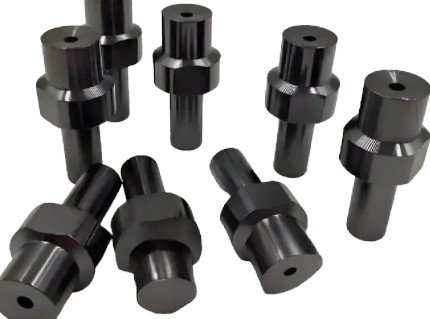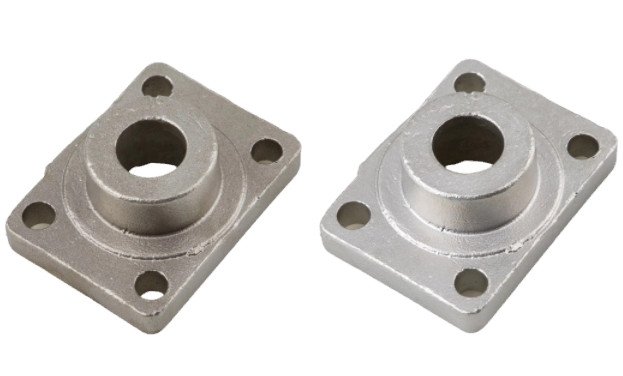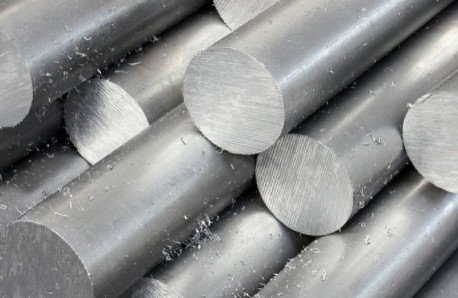Stainless steel surface finishes play a critical role in determining the material’s performance, durability, and aesthetic appeal across various applications. The finish affects corrosion resistance, cleanability, and mechanical properties, making it essential to select the appropriate finish for specific use cases. This article provides a detailed, technical overview of stainless steel surface finishes, their classifications, measurement parameters, and applications, ensuring a systematic understanding for engineers, manufacturers, and designers.
Overview of Stainless Steel Surface Finishes
Stainless steel surface finishes refer to the texture and appearance of the metal’s surface, achieved through mechanical, chemical, or electrochemical processes. These finishes are categorized into mill finishes, polished finishes, and special finishes, each serving distinct functional and aesthetic purposes. The choice of finish impacts corrosion resistance, wear resistance, and suitability for specific environments, such as industrial, sanitary, or architectural settings. Standards like BS EN 10088-2 and ASME B46.1 provide guidelines for specifying and measuring these finishes.
Surface finishes are quantified by roughness parameters, primarily Ra (arithmetic average roughness), measured in micrometers (µm). Lower Ra values indicate smoother surfaces, while higher values denote rougher textures. The finish selection depends on the application, with smoother finishes preferred for hygienic or decorative purposes and rougher finishes for structural or industrial uses.

Types of Stainless Steel Surface Finishes
Stainless steel finishes are broadly classified into three categories: mill finishes, polished finishes, and special finishes. Each category includes specific finishes with defined characteristics and applications.
Mill Finishes
Mill finishes are applied during the initial production of stainless steel and serve as the base for further processing. These finishes are typically functional and cost-effective, suitable for applications where aesthetics are secondary.
- No. 1 Finish: Produced by hot rolling, annealing, and pickling, this finish has a rough, dull appearance with Ra values of 4–7 µm. It is used in industrial applications like furnace parts, tanks, and structural components where appearance is not critical.
- No. 2D Finish: Achieved through cold rolling, annealing, and pickling, this finish is smoother and non-reflective, with Ra values of 0.4–1.0 µm. It is ideal for deep drawing applications, such as automotive exhausts and chemical equipment.
- No. 2B Finish: This finish involves a final light cold-roll pass on polished rolls after No. 2D processing, resulting in a bright, semi-reflective surface with Ra values of 0.1–0.5 µm. It is commonly used in pharmaceutical equipment and kitchen appliances.
Polished Finishes
Polished finishes are achieved through mechanical or chemical processes to enhance smoothness and reflectivity. These finishes are often chosen for aesthetic appeal or hygienic requirements.
- No. 3 Finish: Created by polishing with 100–120 grit abrasives, this finish has a semi-polished, directional grain appearance with Ra values of 0.4–0.8 µm. It is used in architectural components and food processing equipment.
- No. 4 Finish: Polished with 150–180 grit abrasives, this finish offers a clean, brushed appearance with Ra values of 0.2–0.6 µm. It is widely used in kitchen equipment and decorative applications.
- No. 6 Finish: Produced by Tampico brushing a No. 4 finish, this dull, silver-white finish has Ra values of 0.5–1.0 µm. It was historically used in architectural applications but is less common today.
- No. 7 Finish: Achieved by buffing a finely ground surface, this highly reflective finish retains visible grit lines and has Ra values of 0.1–0.3 µm. It is used in column covers and ornamental trim.
- No. 8 Finish: Known as a mirror finish, this is the most reflective, achieved by polishing with progressively finer abrasives and buffing, with Ra values below 0.1 µm. It is used in high-end architectural features and sculptures, such as Chicago’s “Cloud Gate.”
Special Finishes
Special finishes are tailored for specific functional or aesthetic requirements, often involving advanced processes like abrasive blasting or electrochemical polishing.
- Bright Annealed (BA) Finish: Produced in a controlled atmosphere to prevent scale formation during annealing, this finish is smooth and reflective with Ra values of 0.05–0.2 µm. It is used in surgical equipment and cookware.
- Temper Rolled (TR) Finish: Created by cold rolling an annealed surface to enhance mechanical properties, this finish varies in appearance based on alloy and cold work, with Ra values of 0.2–0.8 µm. It is used in automotive and industrial components.
- Bead Blasted Finish: Achieved through abrasive blasting with materials like glass beads, this finish has a matte, textured appearance with Ra values of 0.8–2.5 µm. It is used in architectural panels and piping.
- Electropolished Finish: This electrochemical process removes a thin surface layer, resulting in a smooth, reflective surface with Ra values below 0.1 µm. It enhances corrosion resistance and is used in pharmaceutical and food processing equipment.
Surface Roughness Parameters
Surface roughness is a critical metric for evaluating stainless steel finishes. It is measured using parameters defined by standards like ISO 8503 and ASME B46.1. The most common parameters include:
| Parameter | Description | Typical Range (µm) |
|---|---|---|
| Ra | Arithmetic average of surface peaks and valleys | 0.05–7.0 |
| Rz | Average height of the five largest peaks and five deepest valleys | 0.5–25.0 |
| Rq | Root mean square roughness | 0.1–8.0 |
| Rt | Maximum peak-to-valley height | 0.5–30.0 |
Ra is the most widely used parameter in North America, measured using a profilometer with a stylus or laser. Lower Ra values correlate with smoother surfaces, reducing microbial adhesion and improving corrosion resistance, which is critical for sanitary applications.
Measurement Techniques for Surface Roughness
Surface roughness is measured using precise instruments to ensure compliance with industry standards. Common techniques include:
- Contact Profilometry: A stylus with a sapphire or diamond tip traces the surface, measuring vertical displacements. The stylus size must be smaller than the smallest surface feature to accurately capture peaks and valleys.
- Non-Contact Methods: Laser or optical profilometers use light to measure surface topography, offering high precision for delicate surfaces.
- Microscopy Techniques: These provide qualitative data on surface texture, useful for analyzing peaks and valleys at a microscopic level.
Measurements are compared to standards like ASME B46.1, which specifies surface texture requirements for various applications, ensuring consistency and reliability.
Applications of Stainless Steel Surface Finishes
The choice of surface finish is driven by the application’s functional and aesthetic requirements. Below is a summary of common applications for key finishes:
| Finish | Applications |
|---|---|
| No. 1 | Furnace parts, structural components, heavy machinery |
| No. 2B | Pharmaceutical equipment, kitchen appliances, chemical plants |
| No. 4 | Kitchen equipment, architectural panels, decorative items |
| No. 8 | Mirrors, sculptures, high-end architectural features |
| Electropolished | Pharmaceutical equipment, food processing, medical devices |
Considerations for Selecting a Surface Finish
Selecting the appropriate surface finish requires careful consideration of several factors:
- Corrosion Resistance: Smoother finishes (e.g., No. 8, electropolished) reduce crevices where corrosive particles can accumulate, enhancing durability in harsh environments.
- Cleanability: Finishes with low Ra values (e.g., BA, electropolished) are preferred in food, pharmaceutical, and medical industries due to reduced microbial adhesion.
- Aesthetic Requirements: Reflective finishes like No. 7 and No. 8 are chosen for decorative applications, while matte finishes like No. 2D suit functional uses.
- Cost: Mill finishes are cost-effective, while polished and special finishes increase processing costs due to additional steps like buffing or electrochemical treatment.
- Mechanical Properties: Finishes like TR enhance tensile strength, while others may not affect mechanical properties significantly.
Clear specification using industry standards (e.g., BS EN 10088-2) and agreement on samples between manufacturer and buyer are essential to avoid discrepancies, as terminology may vary among suppliers.

Common Issues in Surface Finishing
While surface finishing enhances stainless steel’s properties, certain issues can arise if not properly managed:
- Contamination: Using tools previously applied to carbon steel can introduce iron particles, leading to rust staining on stainless steel surfaces.
- Inconsistent Finishes: Variations in abrasive wear or manufacturing conditions can result in uneven finishes, particularly with No. 4 brushed finishes.
- Surface Defects: Deep scratches or imperfections must be removed before final polishing, especially for mirror finishes, as they become highly visible.
Proper handling, cleaning, and adherence to standards mitigate these issues, ensuring the desired finish quality.
Conclusion
Stainless steel surface finishes are integral to optimizing the material’s performance and appearance. From mill finishes like No. 1 and No. 2B to polished finishes like No. 8 and special finishes like electropolished surfaces, each finish serves specific functional and aesthetic purposes. Understanding roughness parameters, measurement techniques, and application requirements allows for informed finish selection. By addressing potential issues like contamination and inconsistent finishes, manufacturers can achieve reliable, high-quality results tailored to their project needs.
Stainless Steel Surface Finishes: Frequently Asked Questions (FAQ)
What are stainless steel surface finishes?
Stainless steel surface finishes refer to the various treatments applied to the surface of stainless steel to alter its appearance, texture, or functional properties (such as corrosion resistance, friction, or cleanability). These finishes are achieved through processes like grinding, polishing, blasting, or passivation, and they play a critical role in both aesthetic and performance-based applications.
What are the most common types of stainless steel surface finishes?
2B Finish: A cold-rolled, bright annealed finish with a smooth, slightly reflective surface (common in kitchen appliances and food processing equipment).
No. 4 Finish: A brushed finish created by grinding with abrasive belts, resulting in a directional, satin-like texture (used in architectural panels and handrails).
Mirror Finish (8K Finish): A highly reflective, polished finish achieved through progressive grinding and buffing (ideal for decorative applications like furniture or automotive trim).
Honed Finish: A smooth, matte finish with low reflectivity, created by abrasive polishing (often used in healthcare settings for easy cleaning).
Bead Blasted Finish: A rough, uniform texture from high-pressure blasting with glass beads or sand (enhances grip in industrial tools).
Passivated Finish: A chemical treatment (typically with nitric acid) to remove surface contaminants and enhance corrosion resistance (common in marine or medical equipment).
How do I maintain different stainless steel finishes?
Smooth finishes (2B, mirror): Clean with mild soap and water, or a stainless steel cleaner, to avoid scratching. Avoid abrasive pads.
Brushed finishes (No. 4): Clean with a soft cloth in the direction of the grain to prevent cross-scratching.
Outdoor/industrial finishes: Regularly remove dirt, salt, or chemicals to prevent corrosion; periodic passivation may be needed for high-exposure areas.
Can damaged stainless steel finishes be repaired?
Minor damage (e.g., light scratches) can often be repaired:
For brushed finishes (No. 4), use abrasive pads or belts in the direction of the grain to blend scratches.
For mirror finishes, re-polishing with fine abrasives may restore reflectivity, though deep scratches may require professional treatment.
Severe damage may require re-finishing the entire surface.
What factors influence the cost of stainless steel surface finishes?
Complexity of the finish: Mirror finishes (8K) are more expensive than 2B or No. 4 due to additional polishing steps.
Material thickness and size: Larger or thicker pieces require more processing time.
Customization: Unique textures or patterns may increase costs due to specialized equipment or labor.

